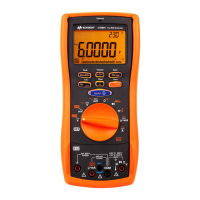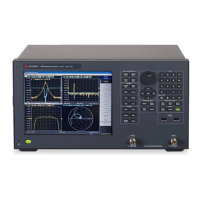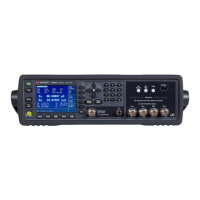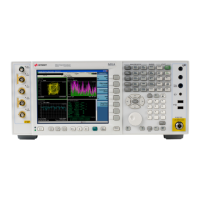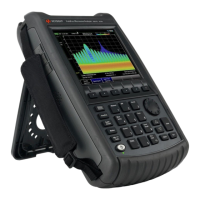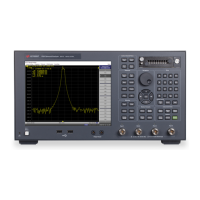Appendixes A
Keysight U8903B User’s Guide 557
The units can be computed using the following formulas.
Table A-43 Unit conversion formula
Unit Formula Description
ΔHz
f – f
ref
f
ref
= Reference frequency
dB
20 × log
10
(ratio)
-
ΔdB
(ratio) – R
ref
R
ref
= Reference ratio
dBg
V
gen
= Amplitude of the generator signal for a corresponding channel
dBm
Z
ref
= Reference impedance
dBr
V
ref
= Reference level
dBu -
dBv
20 × log
10
(V
rms
)
-
W
Z
ref
= Reference impedance
[a]
ΔV
V – V
ref
V
ref
= Reference level
[b]
x
V
ref
= Reference level
[b]
R
ref
= Reference ratio
% 100 × (ratio) -
[a] When the Vrms measurement unit is changed to Watt or dBm, the reference impedance setting will be used for the power level calculation. The
reference impedance refers to the circuitry impedance or load impedance connected to the analyzer when calculating power level. Note that in a
loopback test with no load impedance, the measured voltage value will be twice the expected value as there is no voltage divider present. This will
return a power measurement greater than 6.02 dB if a load is present.
[b] Reference level is defined as a user-entered or a captured value from the current reading as a relative level for the subsequent measurement
reading. It can be set to delta, linear, or log scale.
20 log
10
V
rms
2
V
gen
--------------
⎝⎠
⎜⎟
⎜⎟
⎛⎞
×
10 log
10
1000V
rms
2
Z
ref
---------------- -----------
⎝⎠
⎜⎟
⎜⎟
⎛⎞
×
20 log
10
V
rms
2
V
ref
--------------
⎝⎠
⎜⎟
⎜⎟
⎛⎞
×
20 log
10
V
rms
0.6
-----------
⎝⎠
⎜⎟
⎛⎞
×
V
V
ref
--------
or
Ratio (in %)
R
ref
(in %)
--------------- --------

